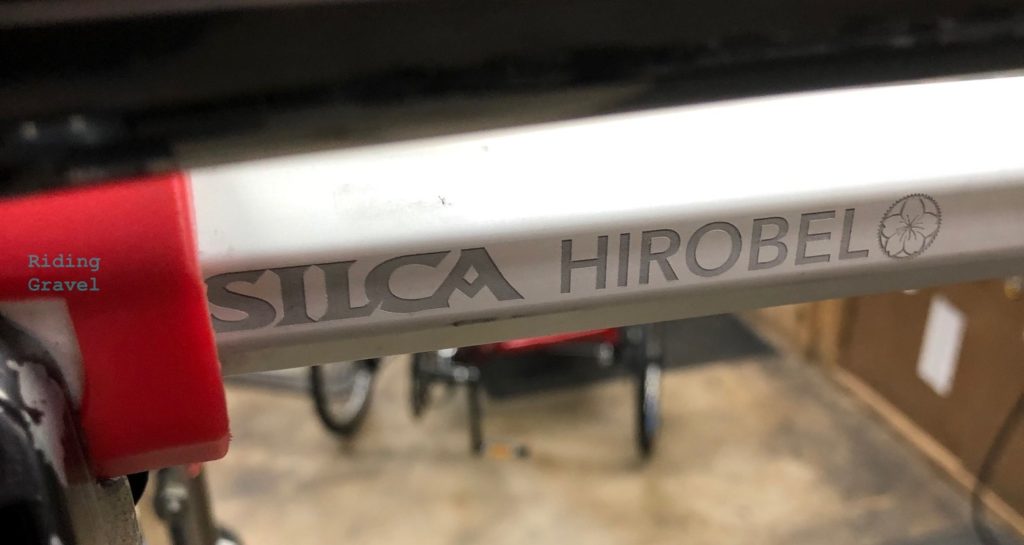Hirobel Frame Clamp: Quick Review- by Guitar Ted
The cycling industry has many individuals who ply their trade as mechanics, and you may not be aware that I, Guitar Ted, have been a bicycle mechanic for 20 years. So, when I first saw the Hirobel Clamp, I got a bit excited. Obviously, mechanics need specialized tools, but so do many of you riders out there, and this is one accessory to a repair stand that really makes sense.
What It Is: The Hirobel Clamp is a device developed to allow you to mount a bicycle to a repair stand without directly clamping to the bicycle with a repair stand clamp. This is beneficial when you have a bicycle with a suspension seat post, a dropper post, or a seat mast/aero seat tube design. The Hirobel Clamp is sort of like a bicycle rack for a car, with a cradle type design, and the bar of the Hirobel Clamp then is held by the repair stand.
Here is what Silca has to say about this tool:
Unique in the cycling industry, the Hirobel is a specially designed repair stand clamp developed for greater compatibility with the needs of today’s frames and components. The Hirobel distributes stresses and loads through the bicycle frame rather than just clamping the seatpost or *gasp* a frame tube, improving stability while eliminating possible crushing forces.
The Hirobel clamp features highly adjustable, specially shaped, paint-friendly cones to hug the frame at tube junctions, providing maximum support and stability with minimal clamping force. This is in stark contrast to the standard “jaw-style” clamp used by the vast majority of shops and home mechanics.
The device essentially wedges between the head tube and seat tube directly underneath the top tube using two soft grey rubber cradles, two straps, and two metal pieces which attach to the silver “load bar”. On one end the cradle is allowed to slide when loosened using a black lever which spins and releases the black metal clamp, (see image above). The lever has a button on it, which when depressed, allows you to reposition the lever any way you want. Kind of like a DT Swiss ratcheting skewer, if you will. This cradle slides when loosened by that lever allowing one to adjust for different frame sizes when mounting a bicycle to the clamp and to remove the clamp from the bicycle when you are finished with your repairs.
The “load bar” is what attaches the Hirobel Clamp to the repair stand. The bicycle is held to the Hirobel Clamp using the stretchy black straps, one of which is seen to the right here, and that strap has holes to allow you to hook the strap over a button located on the grey cradle. This secures your bicycle to the cradle, and in turn, the repair stand clamps the load bar. Your frame is never in danger of being scuffed, crushed, or damaged in any way by the repair stand.
Obviously, the repair stand can still rotate the bike and do all the things a repair stand does for you- allowing for full repairs, cleaning, and maintenance of your bicycle without having to figure out how to clamp the bicycle directly without damaging it.
Impressions: So, I used this for several weeks in a bike shop setting on several different bicycles for varying types of repairs ranging from bottom bracket service to simple tune ups, and even for a frame-up build of a vintage mountain bike. The clamp works brilliantly across all types of bikes I tried it on. The sliding cradle snugs up well and the straps do a great job of securing the frame to the Hirobel Clamp.
Once you get the hang of it, you can get the bicycle pretty stable. That said, it isn’t as stable as clamping directly to a repair stand, so big jobs requiring a lot of leverage or force can be a chore with the Hirobel Clamp. But that probably isn’t in the wheelhouse of most average riders, so I can’t ding this product from that viewpoint. If you, say, just want to do a little fine tuning, replace a part, or maybe you just want to clean your bike, well that’s another story. The Hirobel Clamp is perfect for these chores.
At The Finish: Does this sort of tool make sense for the average all road/gravel rider? It retails for $185.00, so it isn’t “cheap”. But would you rather risk damaging a nice bicycle, which these days can be north of 2K pretty easily? If you are into doing basic maintenance, maybe even up to replacing components from time to time, I’d give this a hearty recommendation. Of course, you need to also have a repair stand. But if you have a nice bike and you do your own maintenance, you probably should have one of those also.
This is a quality piece of engineering and design though, and I suspect it would last, even in a shop context, for years of use. Besides, there is a big difference in satisfaction in something that”just gets you by” and having “the right tool for the job“. When it comes to working on a nice bike and keeping it maintained, I know which I would rather have.
Check out the Hirobel Clamp here on Silca’s website.
Note: Silca sent out the Hirobel Clamp at no charge to riding Gravel for test and review. We were not paid, nor bribed for this review and we always strive to give our honest thoughts and reviews throughout.

